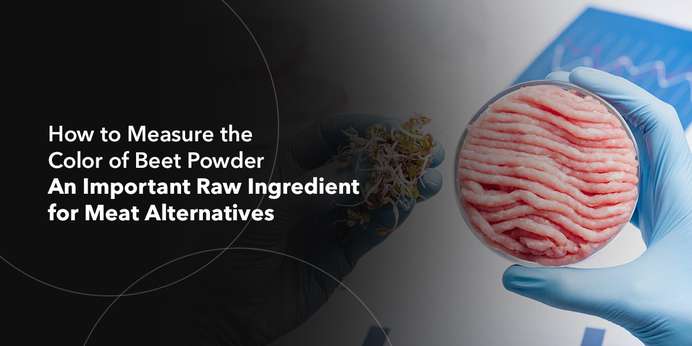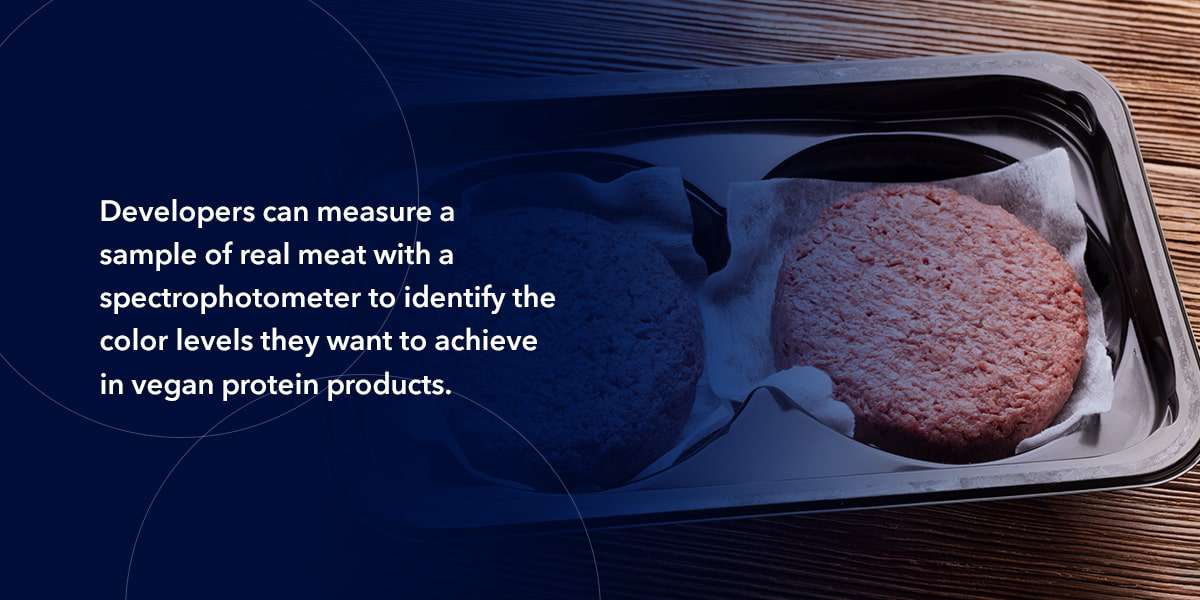
In plant-based protein development, many researchers have uncovered beet powder as an essential ingredient for meat alternatives. This vibrant purple-red material can create the signifying pink color we often associate with real meat, but it needs to be used strategically. Too much beet powder in meat alternatives may make the plant-based protein hot pink, and too little may lead to an unappetizing gray.
Create Quantitative Color Measurements With Spectrophotometry
Color is a measurable science, even if it seems like a subjective quality. We perceive color based on how much an object transmits and reflects the wavelengths of light, and we can measure this transmittance and reflectance to quantify color.
Spectrophotometers achieve this measurement with a single light source separated into each individual wavelength. These different wavelengths appear as different colors. In the visible spectrum range, violet has the shortest wavelength and the highest frequency. Red has the longest wavelength and the lowest frequency.
A spectrophotometer will isolate selected wavelengths and direct them at a sample. Then, a sensor will measure how much of the light is reflected and transmitted. The colors an object transmits or reflects are the colors we see, so beet powder reflects violet and red. The spectrophotometer will create a data set of the different wavelengths for users to understand the color makeup of a sample.




